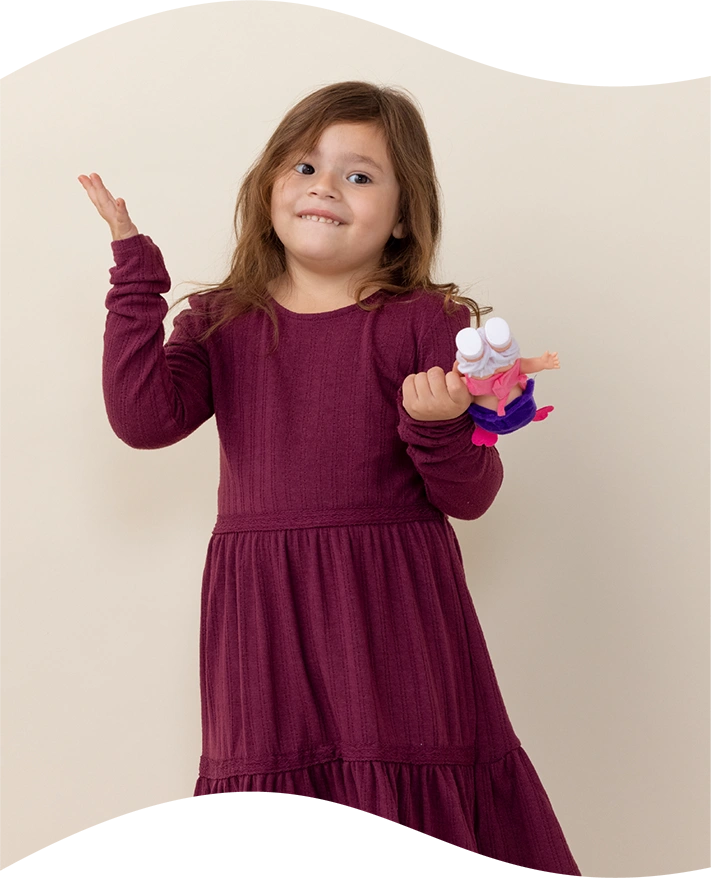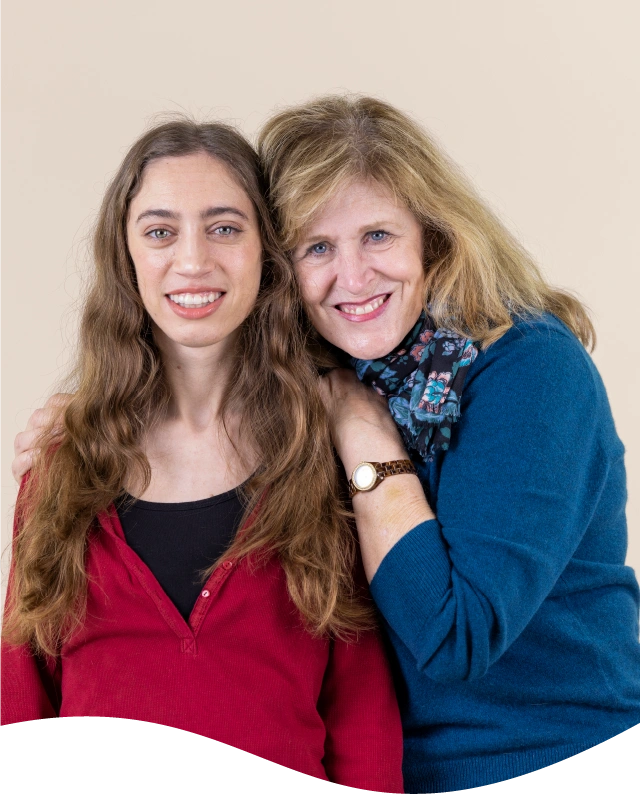Learn
Understanding
Autism


What is Autism?
Autism Spectrum Disorder (ASD) is a neurodevelopmental condition that affects the way a person interacts with others communicates, and processes sensory information. It is a complex and lifelong condition that typically appears during early childhood. ASD is a spectrum condition that includes a range of diagnoses, such as Asperger’s Disorder and Pervasive Developmental Disorder – Not Otherwise Specified [PDD-NOS]. It is defined by a certain set of behaviors, and the autism experience is unique for every individual.
People with Autism can have difficulties with social skills, communication, relationships, and self-regulation, but the severity of these difficulties can vary from person to person.
What are the
Causes of Autism?
The causes of autism are not attributed to a single factor but are believed to involve complex interactions between genetic, neurological, and environmental factors.
Differences in brain structure or function, as observed through brain scans, indicate that autism is associated with unique physical characteristics in the brain. While the exact cause remains unidentified, research is exploring various theories including genetic links, heredity, and potential medical conditions.

Characteristics of Autism
Autism is a condition that is characterized by a wide range of challenges and symptoms that can affect communication. The behaviors of Autism may be apparent in infancy, but they usually become clearer during early childhood. As part of a regular health visit, your child’s doctor should perform developmental screenings focused on Autism. This screening is recommended at ages 18 and 24 months for all children.
Social Behaviour
People with Autism often find it difficult to interact with others socially, have a preference for solitude, lack interest in forming friendships, and struggle to interpret social cues such as eye contact or smiles.


Communication
Some individuals with Autism may develop speech later than expected or may not speak at all; Tend to repeat the same words or sounds, or engage in repetitive physical movements like hand flapping. Additionally, they may have atypical nonverbal communication such as avoiding eye contact, exhibiting few facial expressions, or having a monotone voice.
Stereotyped Behaviour
Individuals with Autism may face difficulties when it comes to changes in routine, trying new foods, and being in new environments. They may exhibit abnormal responses to different sensations. These responses could be either over-sensitive or under-responsive to pain, light, sound, smell, touch, or balance.


Other Behaviors
They may exhibit extremes in activity levels, unexplained tantrums, an intense focus on specific interests, repetitive movements, and unusual ways of relating to people, objects, and events. These symptoms manifest uniquely in each person, highlighting the spectrum nature of Autism.
How is Autism Diagnosed?
Autism is defined by the American Psychiatric Association in the Diagnostic and Statistical Manual (DSM-5). Clinicians use this manual to diagnose Autism based on the following criteria:

Persistent differences in communication, interpersonal relationships, and social interaction across different environments. This may include nonverbal or atypical speech patterns, difficulty understanding nonverbal communication, trouble making and maintaining friendships, and difficulty with typical back-and-forth conversational style.
Restricted and repetitive behavior, patterns, activities, and interests. This may include repeating sounds or phrases (echolalia), repetitive movements, preference for sameness and difficulty with transition or routine, rigid or highly restricted and intense interests, and extreme sensitivity to or significantly lower sensitivity to sensory stimuli.
Autism ABC's
There are many acronyms that you will run into along your journey. Some may be confusing but we are here to help! Below you will find some of the most commonly used acronyms within the disability community.
AAC = Assistive Augmentative Communication or Alternative Augmentative Communication
ABA = Applied Behavioral Analysis ABC = Antecedent, Behavior, Consequence
ADA = Americans with Disabilities Act
ADD / ADHD = Attention Deficit Disorder / Attention Deficit Hyperactivity Disorder
ADOS = Autism Diagnostic Observation Scale
ADR = Alternative Dispute Resolution
AEIE = Accept, Enrich, Inspire, Empower – Autism Empowerment’s 4 Foundational Pillars
AER = Autism Empowerment Radio
AIT = Auditory Integration Training
APE = Adaptive Physical Education
APR = Annual Performance Report
AS = Asperger Syndrome or Asperger’s Syndrome
ASD = Autism Spectrum Disorder(s)
ASL = American Sign Language
ASR = Autism and Scouting Radio
AT = Assistive Technology
AYP = Adequate Yearly Progres
BD = Behavioral Disorder
BIP = Behavior Intervention Plan
BMP = Behavior Management Plan
BOE = Board of Education
CAPD = Central Auditory Processing Disorder
CAPTA = Child Abuse Prevention and Treatment Act
CBA = Curriculum Based Assessment
CC = Closed Captioning
CD = Cognitive Disability
CDC = Center for Disease Control and Prevention
CEC = Council for Exceptional Children
CF = Cystic Fibrosis
CP = Cerebral Palsy
DA = Developmental Age
DD = Developmental Delay
DDA = Developmental Disabilities Association
DDC = Developmental Disabilities Council
DDD = Division of Developmental Disabilities (AZ)
DES = Division of Economic Security (AZ)
DS = Down Syndrome
DSHS = Department of Social and Health Services – oversees the social services provided to the citizens of Washington State.
DSM-IV = Diagnostic and Statistical Manual of Mental Disorders (4th edition) by the American Psychiatric Association
DSM-V = Diagnostic and Statistical Manual of Mental Disorders (5th edition) by the American Psychiatric Association
ECC = Early Childhood Center (in Vancouver, WA)
ECE = Early Childhood Education
ED = U.S. Department of Education
EHDI = Early Hearing Detection and Intervention
EI = Early Intervention
EIS = Early Interventing Services
ELL = English Language Learner
ESA = Empowerment Scholarship Account (AZ)
ESD = Educational School District
ESD = Extended School Day
ESL = English as a Second Language
ESY = Extended School Year
FAPE = Free and Appropriate Public Education
FAS = Fetal Alcohol Syndrome
FBA = Functional Behavioral Assessment
FERPA = Family Educational Rights and Privacy Act
FOIA = Freedom of Information Act
GE = General Education
GF = Gluten Free
GFCF = Gluten free, Casein Free
GT = Gifted and Talented
HI = Hearing Impaired
HF = High-functioning
HFA = High-functioning Autism
HoH = Hard of Hearing
HQT = Highly Qualified Teacher
IA = Instructional Assistant
ID = Intellectual Disabilites
IDEA = Individuals with Disablities Education Act
IEE = Individualized Educational Evaluation
IEP = Individualized Education Program
IFSP = Individualized Family Service Plan
IHE = Institute of Higher Education
ISAP = Individualized Scout Advancement Plan
ITCA = Infants and Toddlers Coordination Association
ITP = Individualized Transition Plan
LD = Learning Disabled or Learning Disability
LEA = Local Education Agency
LEP = Limited English Proficiency
LFA = Low-functioning Autism
LRE = Least Restrictive Environment
MA = Mental Age
MD = Muscular Dystrophy
MD = Multiple Disabilities
MDR = Manifestation Determination Review
NASDSE = National Association of State Directors of Special Education
NCLB = No Child Left Behind Act (Elementary and Secondary Education Act)
NIH = National Institutes of Health
NIMH = National Institute of Mental Health
NT = Neurotypical
OCD = Obsessive Compulsive Disorder
OCR = Office for Civil Rights (A part of the U.S. Dept. of Education responsible for enforcing Section 504)
ODD = Oppositional Defiant Disorder
OHI = Other Health Impairment
OI = Orthopedic Impairment
OSEP = Office of Special Education Programs, U.S. Department of Education
OT = Occupational Therapy
P&A = Protection and Advocacy
PALS = Peer-Assisted Learning System
PASS = Plan for Achieving Self-Support
PBIS = Positive Behavioral Intervention and Supports
PCA = Personal Care Attendant
PD = Physical Disability
PDD = Pervasive Developmental Disorder
PDD-NOS = Pervasive Developmental Disorder-Not Otherwise Specified – Not otherwise Specified
PECS = Picture Exchange Communication System
PLEP or PLP = Present Level of Educational Performance
PP = Paraprofessional
PS = Preschool
PT = Physical Therapy
PTI = Parent Training and Information Center
RFP = Request for Proposals
RS = Related Services
RSA = Rehabilitation Services Administration (AZ)
RTI = Response to Intervention
SAP = School Age Parents
SAS = Supplementary Aids and Services
SB = Spina Bifida
SCHIP = State Children’s Health Insurance Program
SCIP = Social Communiation Integration Program
SDD = Significant Developmental Delay
SEA = State Education Agency
SEAC = Special Education Advisory Committee
SED = Serious Emotional Disturbance
SI = Sensory Integration
SLD = Specific Learning Disability
SLI = Speech / Language Impairment
SLP = Speech Language Pathologist
SPED or SE = Special Education
SPD = Sensory Processing Disorder
SPOA = Specific Power of Attorney
SSDI = Social Security Disability Income
SSI = Supplemental Security Income
STEM = Science, Technology, Engineering Mathematics
Stim = Self-Stimulating Behaviors or “Stimming”
SI = Sensory Integration
SSI = Supplemental Security Income
TA&D = Technical Assistance and Dissemination Network funded by the Office of Special Education Programs (OSEP)
TANF = Temporary Assistance to Needy Families
TBI = Traumatic Brain Injury
TDD = Telecommunication Devices for the Deaf
TS = Tourette Syndrome
TTY = Teletypewriter (phone system for the deaf)
TWWIIA = Ticket to Work and Work Incentives Improvement Act
VI = Visual Impairment
Voc Ed = Vocational Education
VR = Vocational Rehabilitation
WIC = Women, Infants and Children (Special Supplemental Food Program)
WWC = What Works Clearinghouse (Institute of Educational Sciences)
WWSWD = Working with Scouts with Disabilities